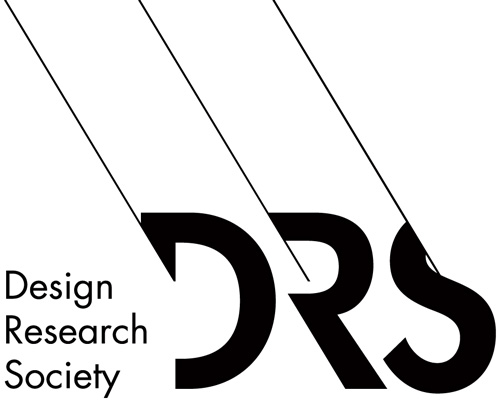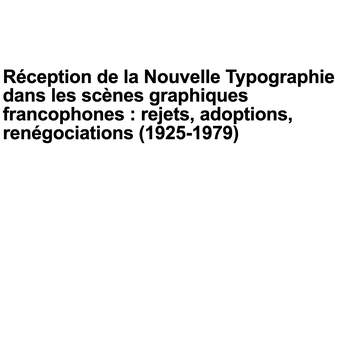Register
Event Details
Call for contributions for the symposium
The new typography in French-speaking scenes: impacts and resistances
Places and dates
21–23 January 2026
Institut National d’Histoire de l’Art, 2 rue Vivienne, Paris
Centre Culturel Suisse, 38 rue des Francs Bourgeois, Paris
Conference Chairs
- Catherine de Smet, Université Paris 8, UR AIAC
- Davide Fornari, ECAL/University of Art and Design Lausanne (HES-SO)
Convenors
- Chiara Barbieri, ECAL/University of Art and Design Lausanne (HES-SO)
- Sara De Bondt, ECAL/University of Art and Design Lausanne (HES-SO)
- Juanma Gomez, Université Paris 8 Vincennes – Saint-Denis, UR AIAC
- Sébastien Morlighem, Université Paris 8 Vincennes – Saint-Denis, UR AIAC
- Léa Panijel, ECAL/University of Art and Design Lausanne (HES-SO)
- Sonia de Puineuf, Université Paris 8 Vincennes – Saint-Denis, UR AIAC
- Tânia Raposo, Université Paris 8 Vincennes – Saint-Denis, UR AIAC
- Alice Savoie, ECAL/University of Art and Design Lausanne (HES-SO)
- Katrien Van Haute, Luca School of Arts, Gent
- Thomas Huot-Marchand, Atelier National de Recherche Typographique (ANRT), Nancy
Argument
The expression “New Typography” was the title of an essay by László Moholy-Nagy in the Bauhaus exhibition catalog of 1923, as well as that of the book by Jan Tschichold published in 1928 (Die neue Typographie). It now refers to the avant-garde movement that attempted to adapt graphic design to the needs of its period. The New Typography was retained by historiography as an emblem of the modernist shift that was taking place in graphic design at the time, and which found a second wind after WW2 with a new, “New Typography” which merged with the Swiss style or the international typographic style.
However, the spread and reception of this movement were not uniform. While its effects on the German-speaking and Anglo-Saxon scenes have been fairly extensively studied, in the short and long term throughout the 20th century, research on the reactions it provoked in the French-speaking scenes – adoption, rejection, or negotiation – is less common. The principles, both formal and political, set out by the protagonists of the New Typography such as Jan Tschichold, gave rise to debates, adhesions and resistances, all of which shed original light on the international context from the 1920s to the 1970s.
The goal of this symposium is to broaden the scope of historiography by examining under-explored scenes: France, Belgium, French-speaking Switzerland, Quebec and countries which were at the time under Belgian and French domination in the Maghreb and sub-Saharan Africa. It aims to confirm or refute commonly accepted propositions (such as the late establishment, from the 1960s, of the New Typography in France through the “Swiss in Paris”, that is Swiss designers who had migrated to Paris), to put forward hypotheses and to open up work tracks.
We are seeking contributions covering the period 1925-1980 and the French-speaking world, and which correspond to one of the following five threads:
- General thread: the reaction in the French-speaking scenes to the principles of New Typography as they were presented by Tschichold in his publications.
- Magazines and Journals: the echoes or oppositions to New Typography in the theoretical graphic discourse conveyed both by professional graphic designers' magazines and by art, architecture, or more broadly cultural magazines.
- Typographic Materials: proximity or dialogue with New Typography in the activity of type designers and foundries.
- Great Projects: presence or inspiration of New Typography in international exhibitions and large identity and signage systems.
- Individuals: a look at New Typography through its actors and heirs, based on archives or living testimonies.
This symposium is organised in the framework of the bilateral collaborative research project “Reception of the New Typography in the French-speaking graphic scenes: rejections, adoptions, renegotiations (1925–1979)”, supported by the ANR / French National Research Agency and the SNSF / Swiss National Science Foundation and led jointly by Prof. Dr Catherine de Smet (Paris 8 University Vincennes – Saint-Denis, UR AIAC) and Prof. Dr Davide Fornari (ECAL/University of Art and Design Lausanne, HES-SO), in partnership with Atelier national de recherche typographique (ANRT), Nancy and LUCA School of the Arts.
www.la-nouvelle-typographie.info
Deadline
Monday 16 June 2025
Submit a proposal
All proposals will be reviewed by the members of the scientific committee (composed of the Conference Chairs and the Convenors) according to the principles of fairness, integrity, and confidentiality.
Questions regarding the selection process may be addressed to the Chairs, Catherine de Smet (catherine.de-smet@univ-paris8.fr) and Davide Fornari (davide.fornari@ecal.ch).
Selected proposals will receive a response in writing by 15 August 2025 at the latest with an invitation to participate in the symposium, which will be held in Paris in person. Travel and accommodation expenses will not be covered.
The program will be published on 15 September 2025.
Requested format for submission, deadline 16 June 2025
Proposals must be submitted by the deadline via the online form: https://researchday.ch/form/view.php?id=28608 in the form of an abstract of up to 2,000 characters (bibliographic references are not required at this stage), accompanied by a short biographical profile (max. 500 characters), preferably in French; English is also accepted.
Expected format for the symposium
20-minute oral presentation (preferably in French), linked to one of the five threads above, and based on a slideshow or video to be projected.


